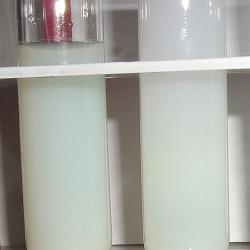Source Institutions
Source Institutions
Add to list Go to activity

In this activity, learners conduct tests for proteins, glucose, and starch. At the beginning of the activity, learners choose three items to test: one known to be “never alive," one known to be “once was alive,” and one mystery item. In addition, each station includes a positive control. By the end of the experiment, learners should be familiar with some of the major organic molecules and should recognize that living things, and substances derived from them, are made of organic molecules. Use this activity to bring in topics surrounding nutrition, health, and digestion--since our bodies are made up of organic molecules, we need each of these molecules as nutrients in our food. [Activity is publicly available through a web crawler capture on Archive.org.]
- 10 to 30 minutes
- 1 to 2 hours
- Over $20 per group of students
- Ages 11 - 18
- Activity, Experiment/Lab Activity, Lesson/Lesson Plan
- English
Quick Guide
Materials List (per group of students)
- Lab handout for each learner
- Test station directions at each test station
- Biuret solution (see Sources section for ordering information)
- Benedict’s solution (see Sources)
- Iodine tincture
- 3 beakers or cups for every group of learners
- 4 test tubes for every group of learners
- 1 test tube rack for every group of learners
- Permanent markers and labeling tape for the beakers and test tubes
- 30-45 eye droppers
- 6-9 trays or bins to keep the materials for each test station
- 6-9 small 100 ml beakers or squeeze bottles to contain test reagents
- (Optional) 6-9 large squeeze bottles of water (500 ml disposable plastic water bottles are fine) for rinsing test tubes at test stations rather than going to a sink
- 6-9 large beakers or cups to dump waste materials
- Hot plate or source of boiling water
- 2-3 insulated containers such as a thermos or Styrofoam cup for creating a hot water bath
- (Optional) 2-3 thermometers to monitor the temperature in the hot Water bath
- Disposable latex gloves
- Solutions to test (ideas: mixture of cornstarch and water; milk; glucose solution; chicken broth; wheat flour; orange juice; water; alcohol; dish soap; vinegar; pond water; lemonade)
Subjects
-
Life Sciences
- Cells
-
Human Body
- Health and Nutrition
-
Physical Sciences
-
Chemistry
- Chemistry of Life
-
Chemistry
-
The Nature of Science
-
The Scientific Process
- Asking Questions
- Conducting Investigations
- Gathering Data
-
The Scientific Process
Informal Categories
- Food and Cooking
Audience
To use this activity, learners need to:
- see
- see color
- read
- touch
Learning styles supported:
- Involves hands-on or lab activities
Other
Components that are part of this resource:
Includes alignment to state and/or national standards:
Includes assesments for student learning:
This resource is part of:
Access Rights:
- Free access
By:
- Salter, Irene
Rights:
- Creative Commons: Non-commercial (by-nc), Irene Salter,
Funding Source:
- Rose Foundation
